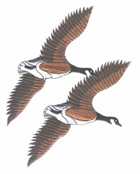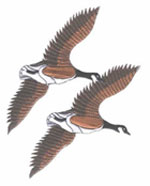Photo taken from 'The Making of a Legionaire by Peter Macdonald Published by Guild Publishing by arrangement with Sidgwick & Jackson Ltd 1991. CN 4737
The French Foreign Legion (Légion étrangère) is a unique military unit in the French Army established in 1831. The legion was specifically created for foreign nationals wishing to serve in the French Armed Forces. Commanded by French officers, it is also open to French citizens, who amounted to 24% of the recruits as of 2007.
The Legion today is known as an elite military unit whose training focuses not only on traditional military skills but also on its strong esprit de corps. As its men come from different countries with different cultures, this is a widely accepted solution to strengthen them enough to work as a team. Consequently, training is often described as not only physically challenging, but also extremely stressful psychologically.
The French Foreign Legion was created by Louis Philippe, on 10 March 1831. The direct reason was that foreigners were forbidden to serve in the French Army after the 1830 July Revolution, so the Legion was created to allow the government a way around this restriction. The purpose of the Legion was to remove disruptive lements from society and put them to use fighting the enemies of France. Recruits included failed revolutionaries from the rest of Europe, soldiers from the disbanded foreign regiments, and troublemakers in general, both foreign and French. Algeria was designated as the Legion's home.
In late 1831, the first Legionnaires landed in Algeria, the country that would be the Legion's homeland for 130 years and shape its character. The early years in Algeria were hard for Legionnaires because they were often sent to the worst postings, received the worst assignments and were generally uninterested in the new colony of the French. The Legion's first service in Algeria came to an end after only four years, as it was needed elsewhere.
The Legion was primarily used to protect and expand the French colonial empire during the 19th century, but it also fought in almost all French wars including the Franco-Prussian War and both World Wars. The Foreign Legion has remained an important part of the French Army, surviving three Republics, The Second French Empire, two World Wars, the rise and fall of mass conscript armies, the dismantling of the French colonial empire and the French loss of the legion's base, Algeria.
To support Isabella's claim to the Spanish throne against her uncle, the French government decided to send the Legion to Spain. On 28 June 1835, the unit was handed over to the Spanish government. The Legion landed at Tarragona on 17 August with around 4,000 men who were quickly dubbed Los Argelinos (the Algerians) by locals because of their previous posting.
The Legion's commander immediately dissolved the national battalions to improve the esprit de corps. Later, he also created three squadrons of lancers and an artillery battery from the existing force to increase independence and flexibility. The Legion was dissolved on 8 December 1838, when it had dropped to only 500 men. The survivors returned to France, many reenlisting in the new Legion along with many of their former Carlist enemies.
It was in Mexico on 30 April 1863 that the Legion earned its legendary status. A company led by Capitaine Danjou, numbering 62 soldiers and 3 officers, was escorting a convoy to the besieged city of Puebla when it was attacked and besieged by two thousand revolutionaries, organised in three battalions of infantry and cavalry, numbering 1,200 and 800 respectively. The patrol was forced to make a defence in Hacienda Camarón, and despite the hopelessness of the situation, fought nearly to the last man. When only six survivors remained, out of ammunition, a bayonet charge was conducted in which three of the six were killed. The remaining three were brought before the Mexican general, who allowed them to return to France as an honour guard for the body of Capitaine Danjou. The captain had a wooden hand which was stolen during the battle; it was later returned to the Legion and is now kept in a case in the Foreign Legion museum at Aubagne, and paraded annually on Camerone Day. It is the Legion's most precious relic.
In World War I, the Legion fought in many critical battles of the war, on the Western Front including Artois, Champagne, Somme, Aisne, Verdun (in 1917) and also suffered heavy casualties during 1918. The Legion was also in the Dardanelles and Macedonian front, and the Legion was highly decorated for its efforts. Many young foreigners, including Americans like Fred Zinn, volunteered for the Legion when the war broke out in 1914. There were marked differences between such idealistic volunteers as the poet Alan Seeger and the hardened mercenaries of the old Legion, making assimilation difficult. Nevertheless, the old and the new men of the Legion fought and died in vicious battles on the Western front, including Belloy-en-Santerre during the Battle of the Somme, where Seeger, after being mortally wounded by machine gun fire, cheered on the rest of his advancing battalion.
As most European countries and the US were drawn into the War, many of the newer "duration only" volunteers who managed to survive the first years of the war were generally released from the Legion to join their respective national armies. Citizens of the Central Powers serving with the Legion on the outbreak of war were normally posted to garrisons in North Africa to avoid problems of divided loyalties.
The Foreign Legion played a smaller role in World War II, though having a part in the Norwegian, Syrian and North African campaigns. The 13th Demi-Brigade was deployed in the Battle of Bir Hakeim. Reflecting the divided loyalties of the time, part of the Legion joined the Free French movement while another part served the Vichy government. A battle in the Syria-Lebanon campaign of June 1941 saw legionnaire fighting legionnaire as the 13th Demi-Brigade (D.B.L.E.) clashed with the 6th Régiment Etranger d'Infanterie at Damas in Syria. Later, 1,000 of the rank and file of the Vichy Legion unit joined the 13th D.B.L.E. of the Free French forces as a third battalion. Following the war, many former German soldiers joined the Legion to pursue a military career with an elite unit, an option that was no longer possible in Germany. Germans still constitute a strong presence in the Legion.
The Foreign Legion played a smaller role in World War II, though having a part in the Norwegian, Syrian and North African campaigns. The 13th Demi-Brigade was deployed in the Battle of Bir Hakeim. Reflecting the divided loyalties of the time, part of the Legion joined the Free French movement while another part served the Vichy government. A battle in the Syria-Lebanon campaign of June 1941 saw legionnaire fighting legionnaire as the 13th Demi-Brigade (D.B.L.E.) clashed with the 6th Régiment Etranger d'Infanterie at Damas in Syria. Later, 1,000 of the rank and file of the Vichy Legion unit joined the 13th D.B.L.E. of the Free French forces as a third battalion. Following the war, many former German soldiers joined the Legion to pursue a military career with an elite unit, an option that was no longer possible in Germany. Germans still constitute a strong presence in the Legion.
The Algerian War of Independence (1954–62) was a highly-traumatic conflict for the Legion. Constantly on call throughout the country, heavily engaged in fighting against the National Liberation Front and the Armée de Libération Nationale (ALN), the war brought the Legion to the brink of extinction after some officers, men and the highly-decorated 1st Foreign Parachute Regiment took part in the Generals' putsch. Notable operations included the Suez Crisis, the Battle of Algiers and various offensives launched by General Maurice Challe including Operations Oranie and Jumelles.
By 1962 the morale of the Legion was at an all-time low; it had lost its traditional and spiritual home (Algeria), elite units had been disbanded, in addition, many officers and men were arrested or deserted to escape persecution. General deGaulle considered disbanding it altogether. But after downsizing it to 8,000 men, stripping it of all heavy weaponry, the Legion was spared, packed up and re-headquartered in metropolitan France.
The Legion now had a new role as a rapid intervention force to preserve French interests not only in its former African colonies but in other nations as well; it was also a return to its roots of being a unit always ready to be sent to hot-spots all around the world. Some notable operations include: the Chadian-Libyan conflict in 1969-72 (the first time that the Legion was sent in operations after the Algerian War), 1978–79, and 1983–87; Kolwezi in what is now the Democratic Republic of the Congo in May 1978; Rwanda in 1990-94; and the Côte d'Ivoire (the Ivory Coast) in 2002 to the present.
In September 1990, the 1e REC, the 2e REI, and the 6e REG were sent to the Persian Gulf as a part of Opération Daguet. They were a part of the French 6th Light Armoured Division, whose mission was to protect the coalition's left flank. After a four-week air campaign, coalition forces launched the ground campaign. It quickly penetrated deep into Iraq, with the Legion taking the Al Salman airport, meeting little resistance. The war ended after a hundred hours of fighting on the ground, which resulted in very light casualties for the Legion.
Source
wikipedia.org/
Articles and web sites of interest



